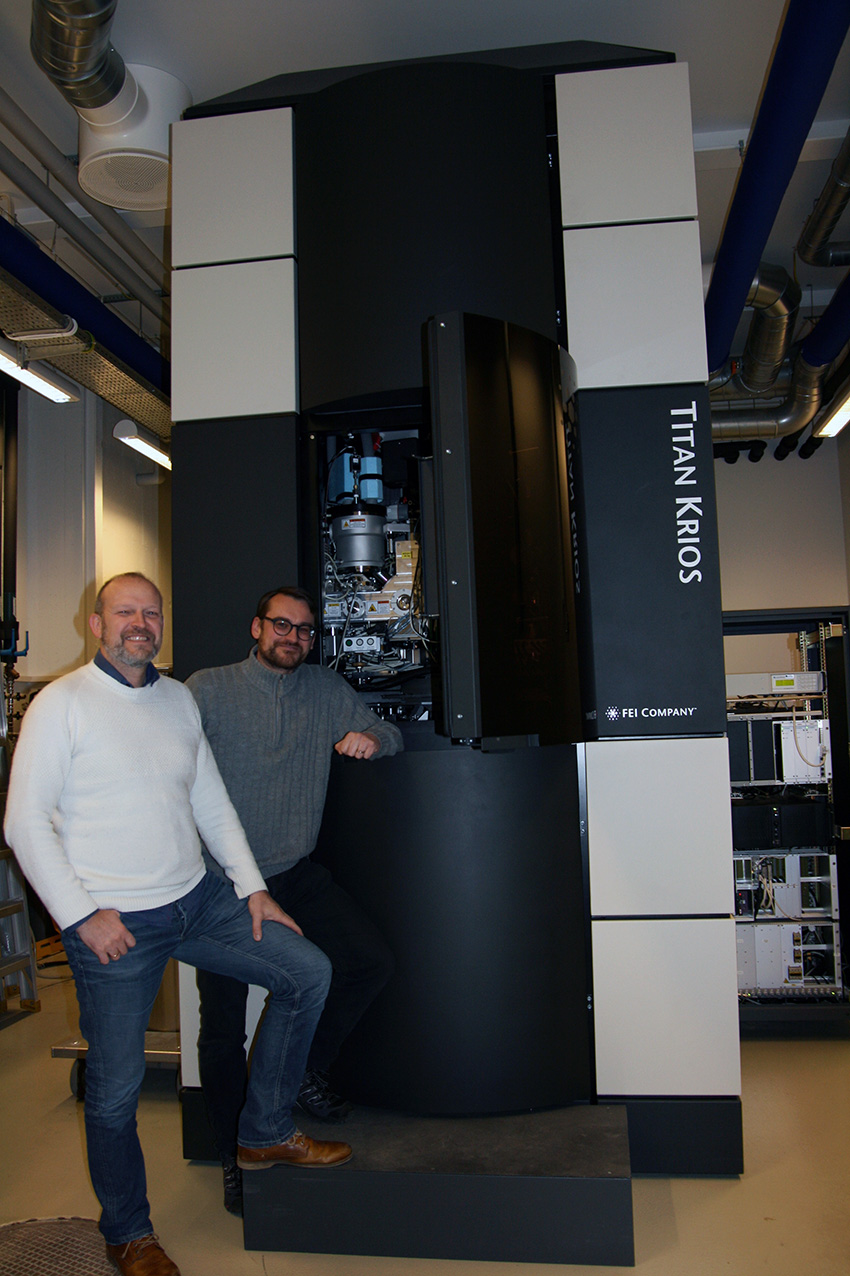Electron Microscopy on the national roadmap
The Danish Agency for Research and Innovation has announced their roadmap for research infrastructures, which includes several initiatives on e.g. imaging, genetics, proteomics, and compound library screening, which will also critically support DANDRITE research activities and initiatives.

Very importantly, the EMBION proposal for establishment of national cryoEM facilities, spearheaded by DANDRITE core group leader and director Poul Nissen, was also included on the roadmap. Together with the University of Copenhagen, Aarhus University seeks to establish core facilities in Aarhus and Copenhagen centered on the Titan-Krios flagship microscope at the iNANO center at Aarhus University. CryoEM and EM tomography are currently in revolutionary developments and will bridge between structural biology and molecular cell biology. The aim of EMBION is to provide this technology to the Danish research community and along with the European XFEL in Hamburg, the Max-IV sycnhrotron and the European Spallation Source in Lund, and the 950 MHz NMR facility at iNANO, cryoEM will complete a suite of facilities for structural biology research in Denmark at the very cutting edge.
A specific contribution to this ambitious goal was provided by the Carlsberg Foundation with a grant of DKK 2.5 mio as cofinancing of a Direct Electron Detecting Camera for the Titan-Krios microscope. Using this new camera technology, single-particle cryoEM can provide even atomic structure determination of large biomolecules including membrane protein complexes of key importance in neuroscience.
"We are immensely grateful for this generous contribution placing the trust in our hands to etablish world-leading cryoEM facilities in Danish research, and we are extremely excited of the future developments and possibilities we will see to support new research and identify original, new ideas and strategies in research and innovation using these facilities," says Poul Nissen, who adds that the new detector hopefully should be available this year.
Read the publication on the Danish Roadmap to Research Infrastructure (in Danish) here:
http://ufm.dk/publikationer/2015/dansk-roadmap-for-forskningsinfrastruktur
Cryo-electron microscopy is used in structural biology research in molecular cell biology as well as medicine and biotechnology. The technology allows for the determination of structures of large biological molecules such as proteins, RNA and DNA, as well as research in molecular models of interaction networks within and between cells. At the same time, it paves the way for the development of protein-based drugs and the development of food production, green chemistry, industrial enzymes and new protein-based materials. The research infrastructure is expected to strengthen the Danish protein and enzyme research.
The pharmaceutical and biotech industries will benefit themselves or through cooperative projects from using the facility, and the research infrastructure is expected to contribute to economic growth by creating better conditions for the development of new pharmaceuticals, biotechnology and protein-based materials and the possibility of spin-off companies. Useful raw data, protocols and checklists for the development and preparation of optimal experiments from the facility will be available on open databases for knowledge transfer. Other knowledge transfer activities planned are courses, open symposiums, the possibility of Industrial PhD students and postdocs and an offer of learning cryoEM methods and facilities.
More information
Professor Poul Nissen
Department of Molecular Biology and Genetics
Aarhus University, Denmark
pn@mbg.au.dk - +45 2899 2295
